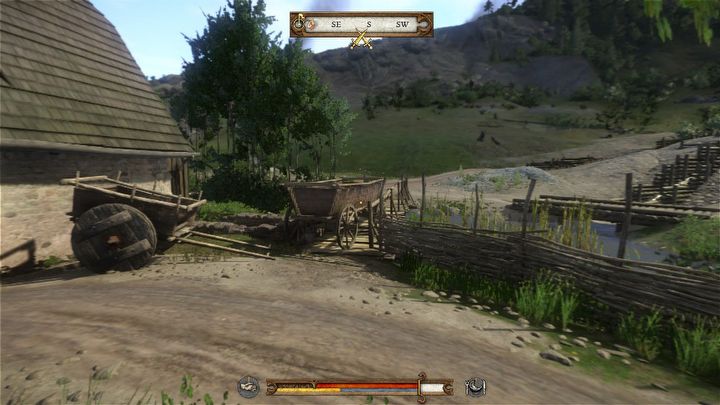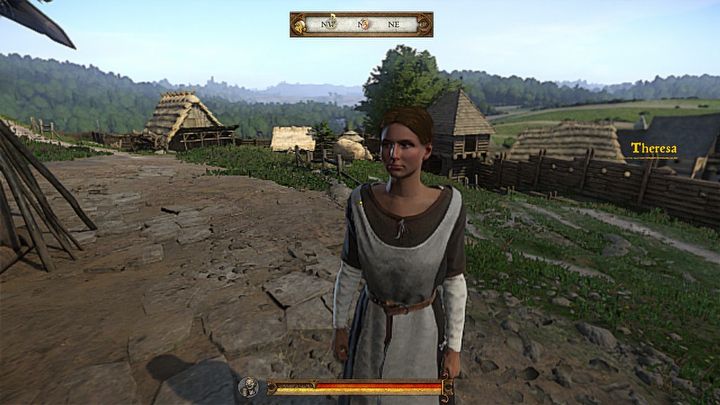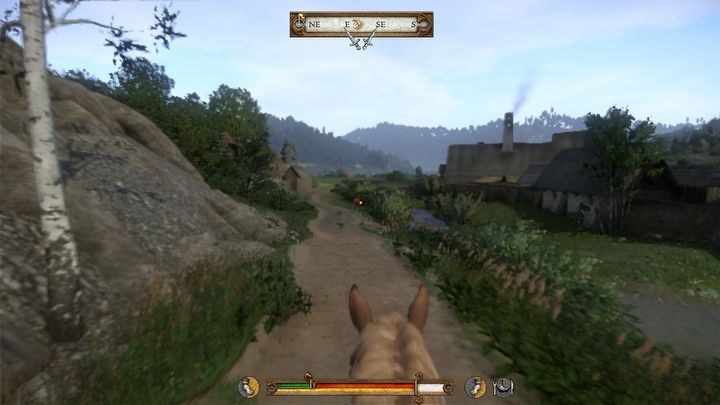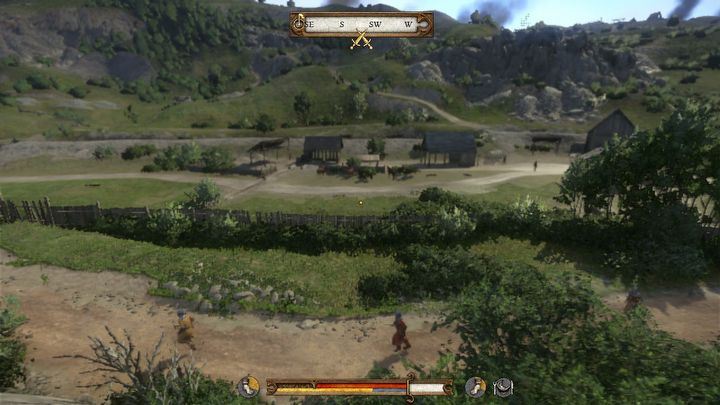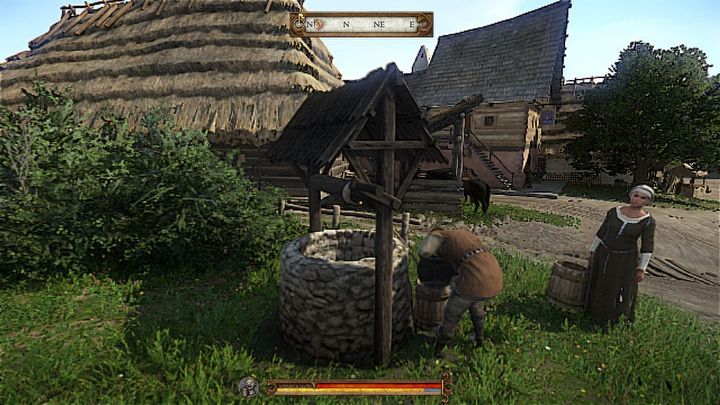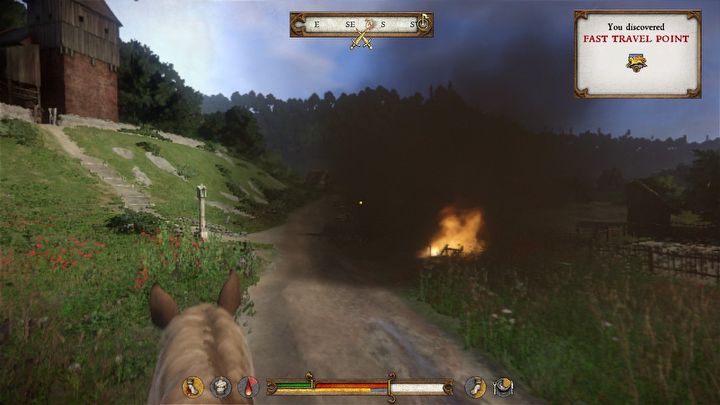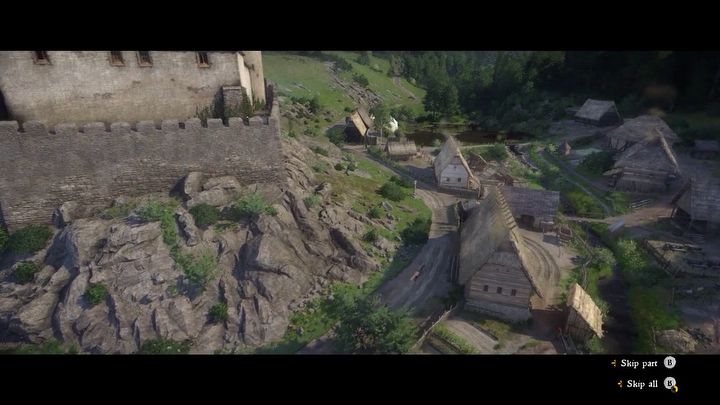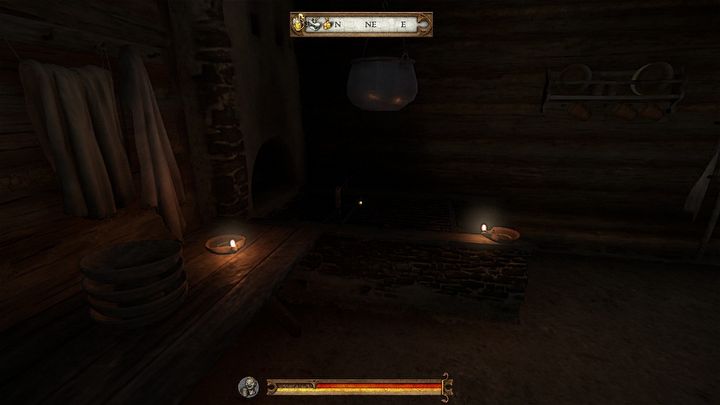Technical Review of Kingdom Come: Deliverance on Switch
Kingdom Come: Deliverance on Switch is ugly, performs poorly, and won't appeal to everyone. Nevertheless, it remains a truly impressive port where you can have a fantastic time.
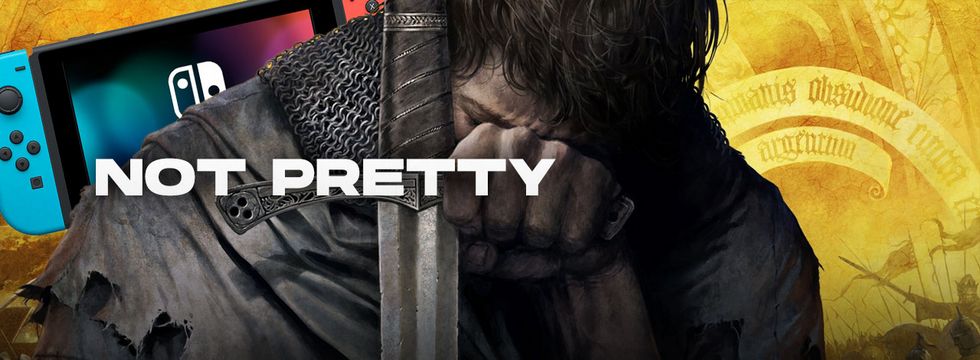
The Saber Interactive team ranks very high in my personal list of miracle workers, but where would you place the people who ported The Witcher 3 or the remastered version of Crysis to the Switch? This time they took on Kingdom Come: Deliverance and once again the impossible became possible – a game that had no right to work on the Switch looks quite good (for the capabilities of this small console).
Kingdom Come: Deliverance faced performance issues when it was released on PC. The situation wasn't much better on PS4 and Xbox One. Instead of at least steady 30 frames per second, we were experiencing drops to 22-23 fps in towns. Although the game has been heavily patched since, it still remains far from perfect. Not to mention that the loading times on previous generation consoles were very long, the resolution dropped significantly, and the textures didn't always load correctly. But how does it look on the Switch, a console that consumes less than 10 watts from the socket (or battery) while playing? Well, quite similar, but this is actually a reason to be impressed.
- a very faithful transfer of content from the "major" game editions;
- brilliant lighting;
- fast loading times;
- game didn't lose its atmosphere after the graphical reductions,
- cutscenes look and work poorly;
- the resolution sometimes is too low;
- 30 frames per second are only visible during moments of inactivity.
You look blurry, maybe you need some medicine?
The above title sums up more or less how I felt playing Kingdom Come: Deliverance on Nintendo Switch. I'm not being mean – these are facts and you can see some examples in the screens included in this review.
While testing the port of Kingdom Come: Deliverance, it brought back memories of the "golden era" of the Nintendo 3DS, when many excellent games were released for the console, despite lacking resolution and sometimes looking quite poor. This refers to both ports from other platforms and exclusive titles. What comes to mind is Monster Hunter Generations, where in some areas the pixels were so large that I could only guess which plants I was collecting. In Kingdom Come: Deliverance it wasn't that bad, but pixels were visible at every step.
From the very beginning of the game, it's evident what the future gameplay will involve, much like in The Witcher 3 or Crysis. The biggest victim of the "ancient" Switch specification is the rendering resolution.
On PS4 and Xbox One, the game runs at 900p without any upscaling, and it looks quite good considering the limitations of this console. On the Switch, it's dynamic 720p, which means the game adjusts the resolution depending on how demanding the scene is. I my opinion, it only achieves 720p when we are standing still in a relatively uneventful location. During running through cities, engaging in combat, exploring, in essence, when playing the game, it's evident that there are too few pixels, and this, like in The Witcher 3, impacts image clarity. At 540p, combined with TAA, the image can be very blurry, especially when rotating the camera. The thing is, on the small screen of the Switch, it usually doesn't look that bad.
The resolution and texture quality also took quite a hit. Most of what you see on the screen will appear more blurry and less detailed than, for instance, on PS4. Fortunately, this is more noticeable from a distance than up close, and I don't think this will be your main problem with the game.
The drawing distance is limited, similar to The Witcher or Crysis, and certain elements, like the previously mentioned trees, may literally materialize before us. This situation isn't perfect, but it's also far from terrible – it can be acceptable on a small screen.
The real terror happens during the cutscenes. These look very bad on the Switch. The noticeable issue is the aliasing of our interlocutors and the disrupted depth of field, which sometimes makes it difficult to see the figures in the foreground because they are less clear than the backgrounds. NPC faces lose almost all the visible details on "larger" platforms, appearing highly simplified and rather blurry. Some scenes with less significant characters give the impression of poorly made models taken from PlayStation 2 and inserted into a Switch game. They’re like moving wax figures, with minimal facial expressions and a very small number of moving parts.
The Switch is not so black as it is painted
I was very impressed when I saw the open world of the game. Here, the devs decided to take a different approach than in the case of The Witcher 3. Instead of reducing the level of detail visible on PC at the lowest graphics settings, the decision was made to preserve most of the elements that contribute to building the world of Kingdom Come: Deliverance. The Switch version impresses with its dense vegetation, reminiscent of what we've seen in Crysis, pretty water, and pleasing reflections. I am also convinced that no compromises have been made in terms of the quantity of trees, objects, distant houses, and all other elements that contribute to the impression of a vibrant, medieval world in comparison to the PS4 and Xbox One. Here is where Switch gets a big plus.
Even the shading was done very well (for the Switch), it looks natural and is surprisingly sharp. In some places, it looks even better than on PS4 and appears to have greater depth.
Lighting is the real mainstay of Kingdom Come: Deliverance on Switch. You can basically notice it at any moment of the game. Throughout the day, the clear sun brightly illuminates the game world and doesn't look artificial. The sunset actually resembles a sunset, not just a change in the sky's color to orange – there are many more such details and that's what's great about Kingdom Come: Deliverance. The lighting is great in enclosed spaces. My favorite activity was watching the candles as they cast light on the walls and brightened up the interiors in various ways, depending on their placement and the time of day. Additionally, transitioning between different rooms and the open world depending on the time of day feels very natural, which isn't always obvious, even in games for the current generation of consoles.
Kingdom Come: Deliverance looks amazing at night. The torchlight, bonfires, and moonlight are very realistic, reflecting off different surfaces. Where necessary, the game can be very dark, illuminating only those places that actually emit light, and not the entire field of view in front of the player's eyes.
What about performance, though? How many frames per second can you expect in Kingdom Come: Deliverance? Well, here I have some slightly less good news. The game aims to maintain 30 fps, and it succeeds particularly well in the open world and in areas with fewer people. Unfortunately, in a heavily RPG-based game, it's impossible to avoid traversing densely populated areas, cutscenes, or battle scenes, and this is where the Switch suffers.
In-game cutscenes run at around 20 frames per second, and frequently drop even lower (due to the inclusion of pre-recorded videos played back during the game). Traversing through cities and towns essentially results in a constant decrease in the frame rate to 25-26 frames per second. During the battles, the game can sometimes maintain 30 fps, but you can expect solid 24 fps during the fights. However, it's interesting that despite apparent significant fps drops, the game remains fairly responsive and doesn't push players away.
Kingdom Come: Deliverance is unexpectedly playable on the Switch
Playing Kingdom Come: Deliverance on Switch isn't as convenient as on other platforms due to all these visual cuts. At times, it was hard for me to see the tree trunks growing two meters in front of my character or the leaves on trees turning into a solid mass when the camera was rotated, but these are ultimately the biggest cons of this port. If we only take into account that the Switch screen has a resolution of 720p and is relatively small, it's really not that bad. During gameplay, we don't hold the console in front of our eyes and count pixels.
The situation looks much more interesting when it comes to loading times. These posed a real nightmare for the last-generation console versions, with each loading leading to a "coffee break." The game takes around a minute and a half to load from zero to the main menu on the Switch, compared to almost three minutes on PlayStation 4. Switching from a hard drive to eMMC memory on the Switch, along with some optimization magic from Saber Interactive, does the trick. On the other hand, in a game for a mobile console, I probably wouldn't tolerate three-minute loading screens. Here, the Switch simply delivers.
I really got into the game when I sat down for slightly longer tests and completed a few quests. I told myself that I could probably finish the game from beginning to end on Switch. Despite all these cuts, I really enjoyed playing Kingdom Come: Deliverance.
However, I have to tell you that this won't be an enjoyable experience for everyone. If you have only been playing Nintendo games or less demanding ports on the Switch, and you're accustomed to the quality of, for instance, the PS5 or a high-end PC, then you'll be in for a surprise. Kingdom Come: Deliverance looks and works exactly like other "impossible" Switch ports. On the other hand, if you are avid Switch players and, like me, have had fun with Doom, The Witcher, Crysis, or Dying Light, you'll appreciate Kingdom Come: Deliverance because it is another example that anything becomes possible in gaming.
